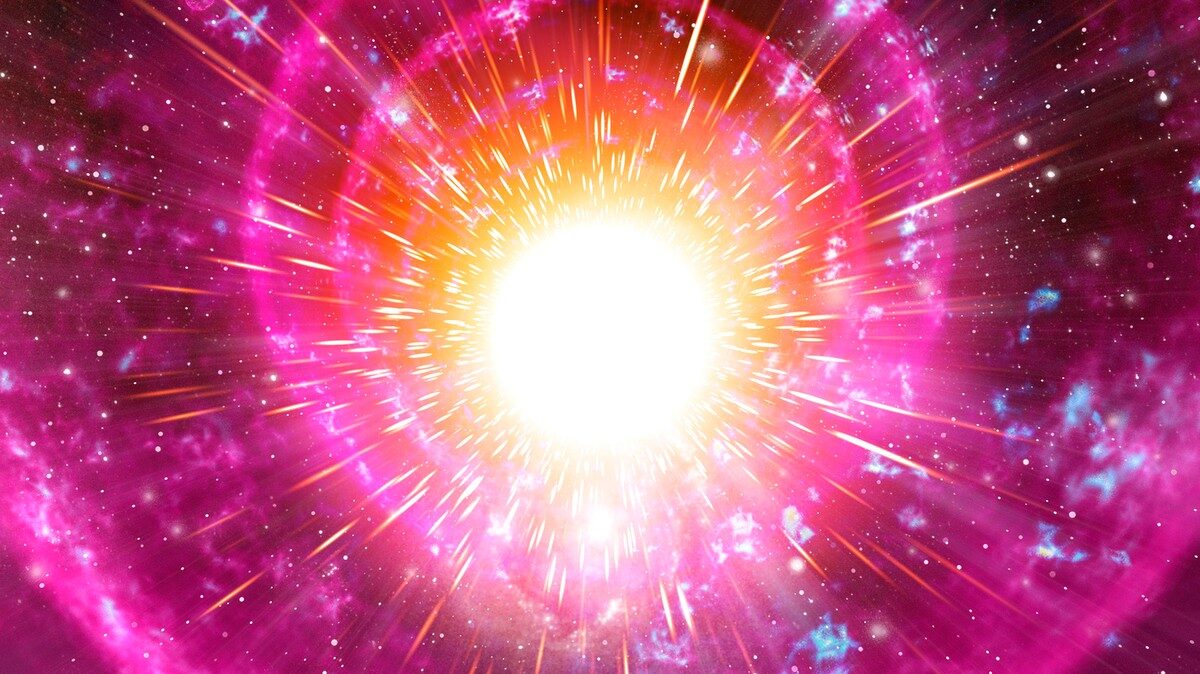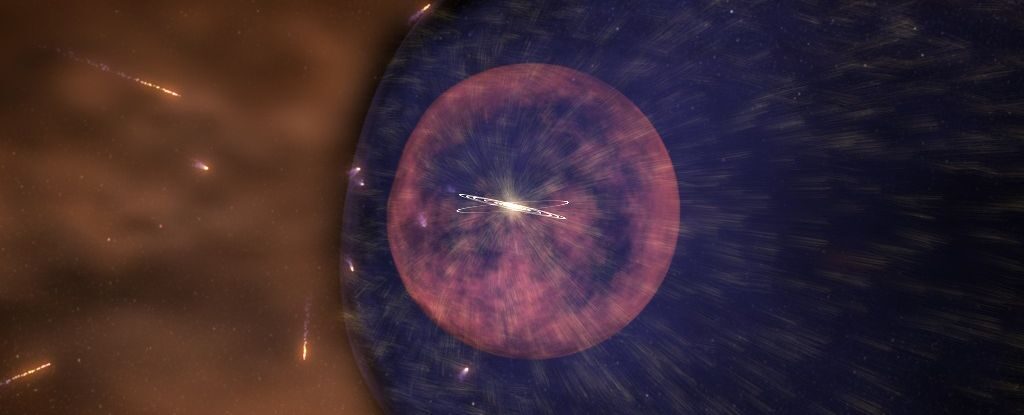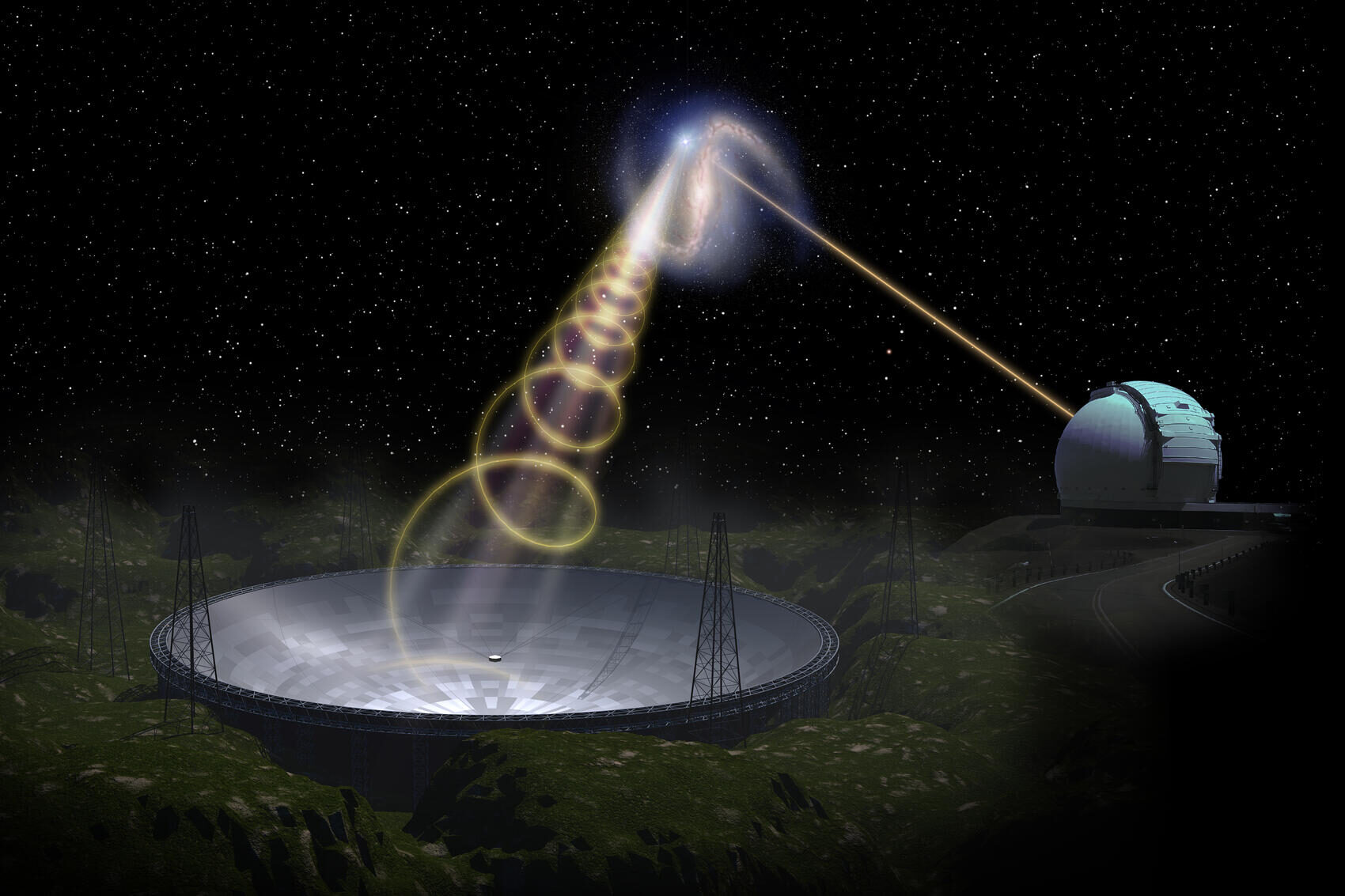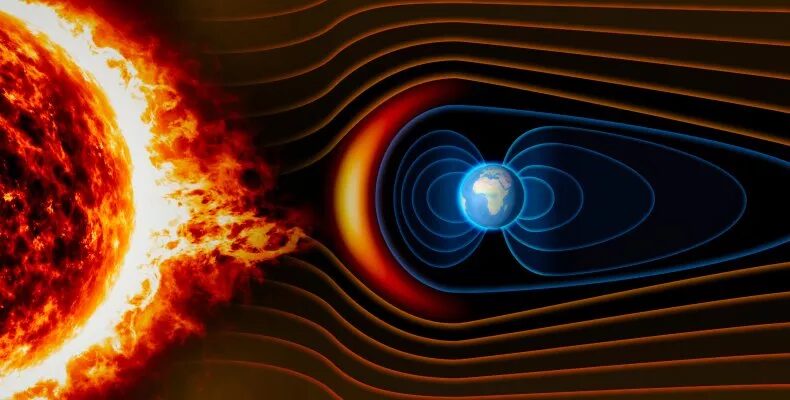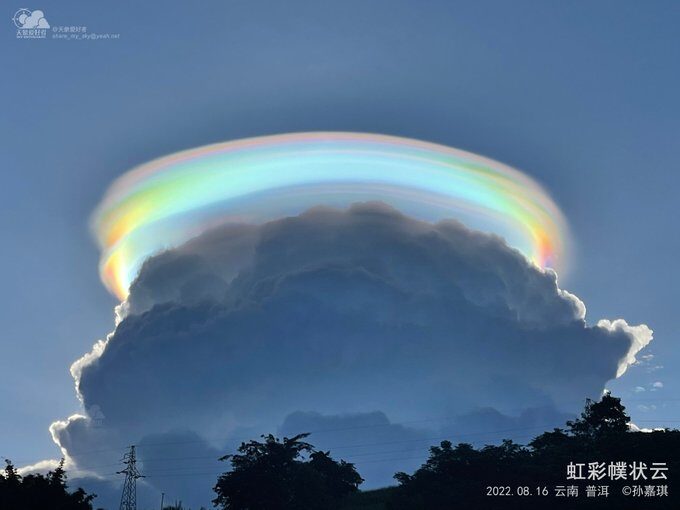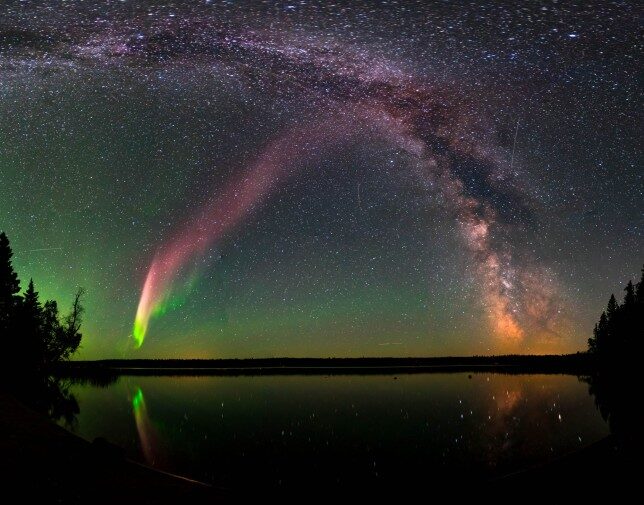Hypervelocity clouds, generally thought to be falling fast into the Milky Way, might have an
alternative explanation that places them near us.
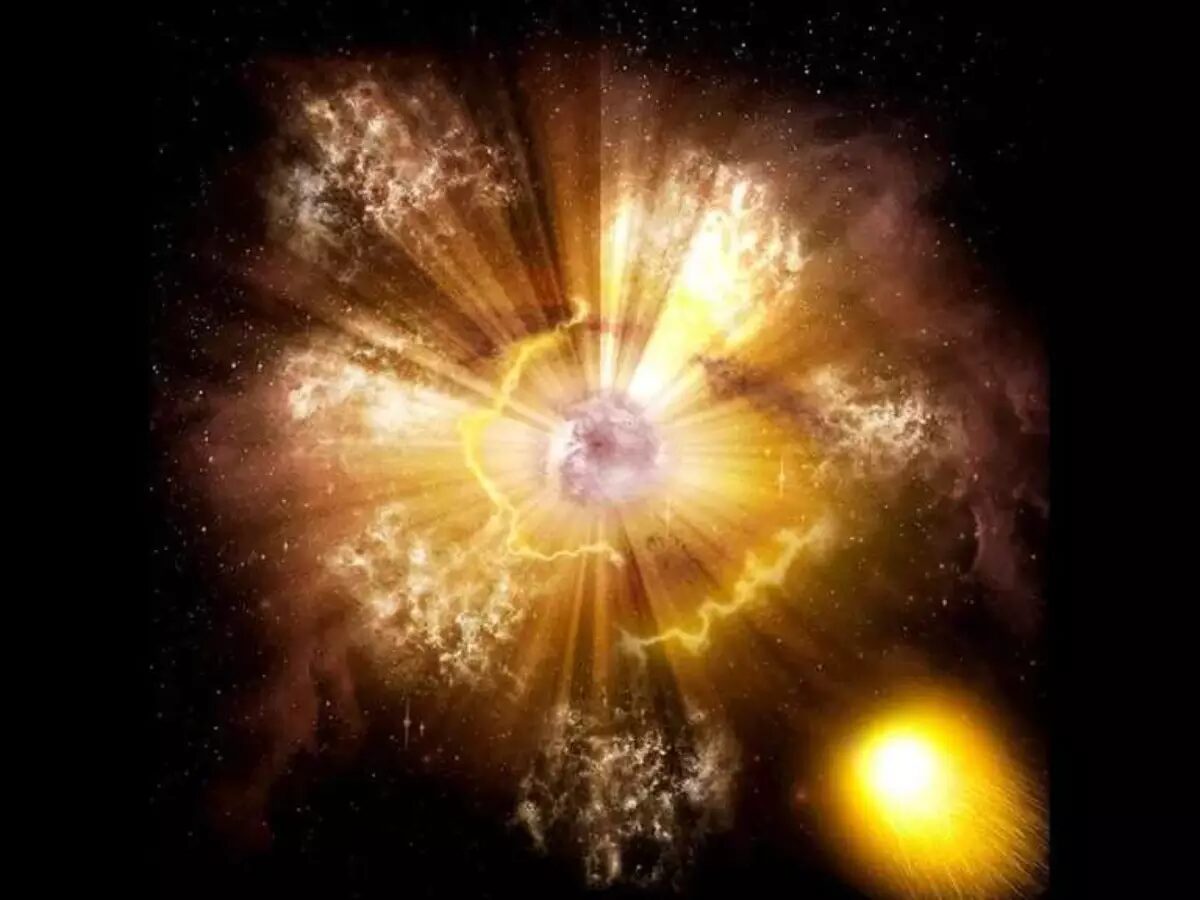
© Leslie ProudfitThis artist’s impression shows the complexity, dynamics, and destruction of a putative supernova explosion in the binary star system 56 Ursa Majoris. The blast carved out a bubble of hydrogen gas, stripped the companion star (lower right) of its outer layers, and sent a high-velocity cloud, dubbed MI, hurtling outward at 120 km/s. MI itself is seen in silhouette against the explosion, as if the central star were wearing a mask.
A mysterious cloud of neutral hydrogen gas, once thought to be falling fast into the Milky Way from its outskirts,
might instead be the product of a recent, nearby supernova.According to solar physicist Joan Schmelz (USRA) and her husband and collaborator, radio astronomer Gerrit Verschuur,
the stellar explosion took place some 100,000 years ago, around the time
Homo sapiens left Africa and migrated into Asia and Europe.
High-velocity clouds (HVCs) are generally thought to be huge, massive, and many thousands of light-years away. But because there's no good way of measuring their distance, their origin is still unclear. Most astronomers believe they have been blown out of the Milky Way by a process known as a
galactic fountain. Alternatively, they could be intergalactic clouds of primordial gas falling prey to our galaxy's gravity.
However, a radio-bright HVC known as MI, which is speeding towards us at 120 kilometers per second (268,000 mph), may be much closer - and thus much smaller and less massive — than previously thought. In a study to appear in
The Astrophysical Journal (
arXiv preprint available here), Schmelz and Verschuur argue that it was ejected by a dying star, and subsequently accelerated when that star went supernova.

